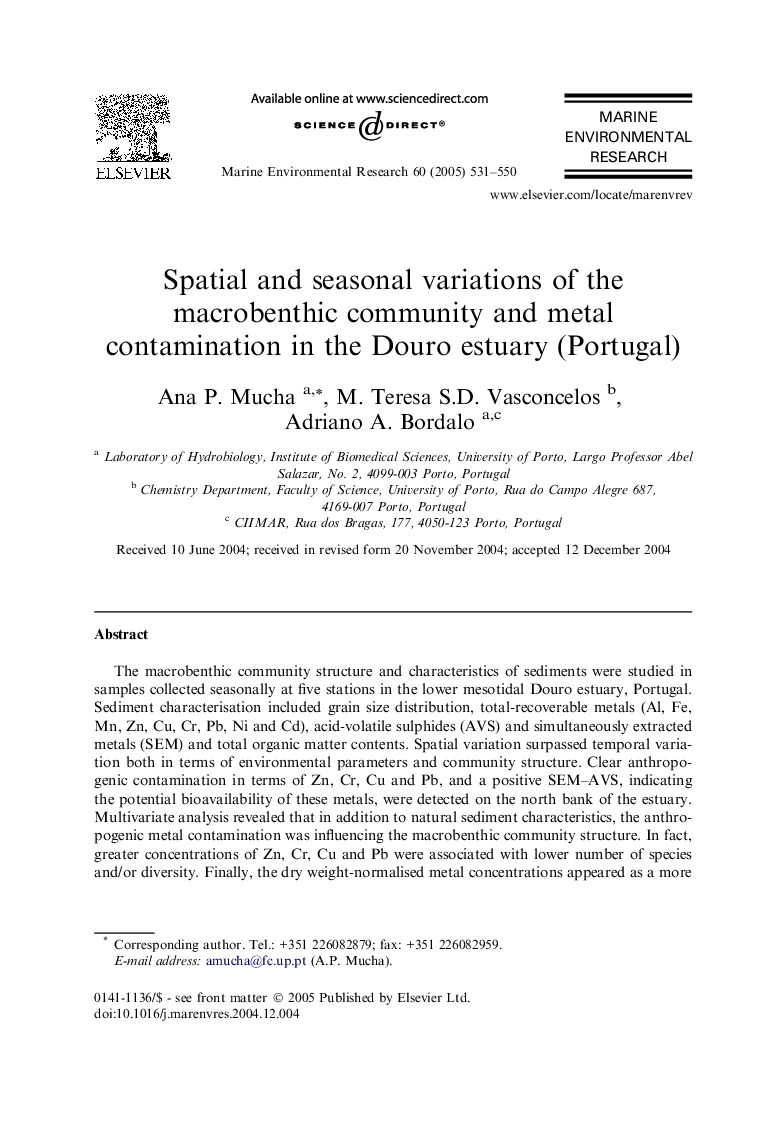| Article ID | Journal | Published Year | Pages | File Type |
|---|---|---|---|---|
| 9484320 | Marine Environmental Research | 2005 | 20 Pages |
Abstract
The macrobenthic community structure and characteristics of sediments were studied in samples collected seasonally at five stations in the lower mesotidal Douro estuary, Portugal. Sediment characterisation included grain size distribution, total-recoverable metals (Al, Fe, Mn, Zn, Cu, Cr, Pb, Ni and Cd), acid-volatile sulphides (AVS) and simultaneously extracted metals (SEM) and total organic matter contents. Spatial variation surpassed temporal variation both in terms of environmental parameters and community structure. Clear anthropogenic contamination in terms of Zn, Cr, Cu and Pb, and a positive SEM-AVS, indicating the potential bioavailability of these metals, were detected on the north bank of the estuary. Multivariate analysis revealed that in addition to natural sediment characteristics, the anthropogenic metal contamination was influencing the macrobenthic community structure. In fact, greater concentrations of Zn, Cr, Cu and Pb were associated with lower number of species and/or diversity. Finally, the dry weight-normalised metal concentrations appeared as a more useful tool than the SEM-AVS model in predicting disturbance of the macrobenthic community in the studied area.
Related Topics
Physical Sciences and Engineering
Earth and Planetary Sciences
Oceanography
Authors
Ana P. Mucha, M. Teresa S.D. Vasconcelos, Adriano A. Bordalo,
